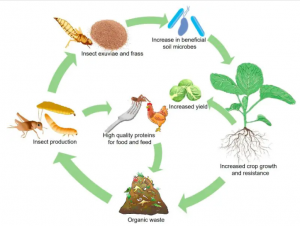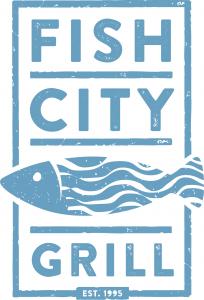The insect feed market is projected to grow from $261.5 million in 2021 to $2.2 billion by 2031, driven by its sustainability and high nutritional value.
— Allied Market Research
WILMINGTON,NEW CASTLE, DELAWARE, UNITED STATES, July 20, 2024 /EINPresswire.com/ — According to a new report published by Allied Market Research, titled, “Insect Feed Market,” The Insect Feed Market Size was valued at $261.50 million in 2021, and is estimated to reach $2.2 billion by 2031, growing at a CAGR of 24.5% from 2022 to 2031.
𝐑𝐞𝐪𝐮𝐞𝐬𝐭 𝐒𝐚𝐦𝐩𝐥𝐞 𝐑𝐞𝐩𝐨𝐫𝐭 : https://www.alliedmarketresearch.com/request-sample/A15172
𝐄𝐱𝐜𝐢𝐭𝐢𝐧𝐠 𝐎𝐟𝐟𝐞𝐫 𝐀𝐥𝐞𝐫𝐭! 𝐆𝐞𝐭 𝐚 𝐌𝐚𝐬𝐬𝐢𝐯𝐞 𝐃𝐢𝐬𝐜𝐨𝐮𝐧𝐭 𝐨𝐧 𝐘𝐨𝐮𝐫 𝐍𝐞𝐱𝐭 𝐏𝐮𝐫𝐜𝐡𝐚𝐬𝐞! 𝐁𝐮𝐲 𝐧𝐨𝐰 𝐚𝐧𝐝 𝐭𝐚𝐤𝐞 𝐚𝐝𝐯𝐚𝐧𝐭𝐚𝐠𝐞 𝐨𝐟 𝐭𝐡𝐢𝐬 𝐥𝐢𝐦𝐢𝐭𝐞𝐝-𝐭𝐢𝐦𝐞 𝐨𝐟𝐟𝐞𝐫.
Insect feed is emerging as a sustainable and nutritious alternative to traditional animal feed sources, such as fishmeal and soybean meal. With the growing global demand for protein and the environmental pressures associated with conventional livestock and aquaculture feed production, insects offer a promising solution due to their high nutritional value, low environmental impact, and efficient feed conversion ratios. Commonly used insects for feed include black soldier fly larvae, mealworms, crickets, and silkworms.
The nutritional profile of insect feed is impressive. Insects are rich in protein, essential amino acids, fats, vitamins, and minerals. For instance, black soldier fly larvae contain high levels of protein and fats, making them a suitable replacement for fishmeal in aquaculture. Mealworms are another excellent source of protein and have a favorable amino acid profile. Additionally, insects provide essential micronutrients, such as iron, zinc, and B vitamins, which are crucial for the growth and health of animals.
Insect farming for feed production is environmentally sustainable. Insects can be raised on organic waste and byproducts from agriculture and food processing, thereby reducing waste and promoting a circular economy. They have a small ecological footprint, requiring significantly less land, water, and feed compared to traditional livestock. Moreover, insects produce fewer greenhouse gases and ammonia emissions, contributing to lower environmental pollution. The rapid growth cycle of insects also allows for continuous and scalable production.
The use of insect feed in aquaculture is particularly noteworthy. The aquaculture industry heavily relies on fishmeal and fish oil derived from wild-caught fish, leading to overfishing and depletion of marine resources. Insect meal can replace or supplement fishmeal, providing a sustainable protein source for farmed fish and crustaceans. Studies have shown that fish fed with insect meal exhibit comparable growth rates, feed conversion ratios, and overall health to those fed with traditional fishmeal. This substitution not only supports sustainable aquaculture practices but also helps in preserving marine biodiversity.
In the poultry and livestock sectors, insect feed is gaining traction as a high-quality alternative to soybean meal and other conventional feeds. Chickens, pigs, and other animals naturally consume insects in their diet, making insect feed a natural and palatable option. Research indicates that incorporating insect meal into poultry and livestock diets can improve growth performance, feed efficiency, and immune response. Additionally, insect feed can enhance the nutritional quality of animal products, such as eggs and meat, by enriching them with beneficial fatty acids and micronutrients.
Despite its potential, the adoption of insect feed faces several challenges. Regulatory frameworks governing the use of insect feed vary across regions and need to be standardized to ensure safety and quality. Public perception and acceptance of insects as a feed ingredient also play a critical role in its market penetration. Educating consumers and stakeholders about the benefits and safety of insect feed is essential for broader acceptance. Furthermore, scaling up insect farming and processing operations requires investment in infrastructure, technology, and research to optimize production efficiency and cost-effectiveness.
Advancements in technology and research are driving the growth of the insect feed industry. Innovations in breeding, rearing, and processing techniques are enhancing the efficiency and scalability of insect production. For example, automated systems and artificial intelligence can optimize feeding, environmental conditions, and harvesting processes, reducing labor costs and increasing output. Additionally, ongoing research aims to improve the nutritional quality of insect feed through selective breeding and dietary modifications.
In conclusion, insect feed represents a sustainable and nutritionally rich alternative to conventional animal feeds. Its adoption can significantly reduce the environmental impact of livestock and aquaculture production, contributing to global food security and environmental sustainability. While challenges remain, advancements in technology, regulatory support, and public awareness are paving the way for the wider acceptance and use of insect feed in the animal nutrition industry. As the demand for protein continues to rise, insect feed stands out as a promising solution to meet the needs of a growing population while safeguarding the planet’s resources.
𝐑𝐞𝐪𝐮𝐞𝐬𝐭 𝐟𝐨𝐫 𝐏𝐫𝐢𝐜𝐢𝐧𝐠 𝐃𝐞𝐭𝐚𝐢𝐥𝐬 : https://www.alliedmarketresearch.com/insect-feed-market/purchase-options
Geographically, the insect feed market is segmented into regions such as North America, Europe, Asia-Pacific, Latin America, and the Middle East and Africa. Europe and North America are leading regions in terms of market share, driven by favorable regulatory frameworks, increasing investments in insect farming infrastructure, and growing consumer awareness of sustainable food production practices.
Key players in the insect feed market include insect farming companies, feed manufacturers, and research organizations. These companies focus on developing innovative insect rearing technologies, optimizing feed formulations, and expanding their distribution networks to capitalize on the growing demand for insect-based feed products globally.
Insect farming offers several sustainability advantages compared to traditional animal agriculture. Insects are highly efficient converters of feed into protein, requiring less land, water, and feed inputs per unit of protein produced compared to conventional livestock. Moreover, insect farming generates fewer greenhouse gas emissions and produces less waste, making it a more environmentally friendly option.
The regulatory landscape for insect-based feed varies across regions. While some countries have established regulations and guidelines for the production and use of insect-based feed, others are still in the process of developing regulatory frameworks. Clear and supportive regulations are essential for the growth of the insect feed industry, providing confidence to investors and consumers alike.
Ongoing research and innovation efforts are driving advancements in insect farming techniques, feed formulations, and processing technologies. Researchers are exploring novel insect species for feed production, optimizing rearing conditions to enhance growth and nutritional content, and developing scalable methods for processing insects into feed ingredients.
Consumer acceptance of insect-based products, including feed, plays a crucial role in market growth. While insect-based feed has gained traction in some regions, consumer awareness and acceptance vary globally. Education campaigns, marketing efforts, and product labeling initiatives can help raise awareness about the benefits of insect-based feed and address potential consumer concerns.
The insect feed market presents significant opportunities for investment and expansion. Insect farming startups, feed manufacturers, and technology providers are attracting investments from venture capital firms, corporate investors, and government agencies. As the market matures and scales up, new players are entering the industry, driving innovation and competition.
In addition to traditional feed applications, insect-based ingredients are being explored for use in various value-added products, such as functional foods, dietary supplements, and biodegradable packaging materials. These innovative applications further diversify the market and create new revenue streams for insect farmers and feed manufacturers.
𝐏𝐫𝐨𝐝𝐮𝐜𝐭 𝐓𝐲𝐩𝐞 𝐀𝐧𝐚𝐥𝐲𝐬𝐢𝐬
– The mealworms segment dominated the global market in 2021, holding a market share of over 32%.
– However, the fly larvae segment is expected to be the fastest-growing segment during the forecast period, driven by factors such as increased adoption in aquaculture and livestock feed applications.
𝐄𝐧𝐝-𝐔𝐬𝐞 𝐀𝐧𝐚𝐥𝐲𝐬𝐢𝐬
– Aquaculture emerged as the dominant end-use segment in 2021.
– The livestock segment is projected to experience the highest growth rate, with a CAGR of 26.0% during the forecast period, fueled by the growing demand for sustainable protein sources in animal feed.
𝐄𝐧𝐝 𝐔𝐬𝐞𝐫 𝐒𝐞𝐠𝐦𝐞𝐧𝐭𝐚𝐭𝐢𝐨𝐧
– The commercial segment accounted for the majority of the market share in 2021, representing over 79%.
– Residential use is anticipated to be the fastest-growing segment, driven by the rising popularity of insect-based products among individual consumers seeking sustainable protein alternatives.
𝐂𝐚𝐭𝐞𝐠𝐨𝐫𝐲 𝐀𝐧𝐚𝐥𝐲𝐬𝐢𝐬
– Branded products dominated the market in 2021, capturing over 70% of the market share.
– Private label products are expected to exhibit the highest growth rate during the forecast period, driven by increased demand for customizable and specialized insect feed solutions.
𝐑𝐞𝐠𝐢𝐨𝐧𝐚𝐥 𝐈𝐧𝐬𝐢𝐠𝐡𝐭𝐬
– North America emerged as the leading revenue contributor in 2021 and is forecasted to reach $704.8 million by 2031, with a notable CAGR of 22.3%.
– LATAM is poised to be the fastest-growing region during the forecast period, driven by factors such as increasing awareness of sustainable farming practices and favorable regulatory frameworks.
𝐊𝐞𝐲 𝐏𝐥𝐚𝐲𝐞𝐫𝐬 𝐚𝐧𝐝 𝐒𝐭𝐫𝐚𝐭𝐞𝐠𝐢𝐞𝐬
– Industry players such as AgriProtein Holdings Ltd, Buhler AG, Protix, and others have adopted product launch and business expansion strategies to enhance market share and profitability.
– These strategies aim to capitalize on the growing demand for insect-based feed solutions and to remain competitive in the dynamic market landscape.
𝐄𝐧𝐪𝐮𝐢𝐫𝐞 𝐁𝐞𝐟𝐨𝐫𝐞 𝐁𝐮𝐲𝐢𝐧𝐠 : https://www.alliedmarketresearch.com/purchase-enquiry/A15172
𝐀𝐛𝐨𝐮𝐭 𝐔𝐬
Allied Market Research (AMR) is a full-service market research and business-consulting wing of Allied Analytics LLP, based in Portland, Oregon. Allied Market Research provides global enterprises as well as medium and small businesses with unmatched quality of “Market Research Reports” and “Business Intelligence Solutions.” AMR has a targeted view of providing business insights and consulting to assist its clients in making strategic business decisions and achieving sustainable growth in their respective market domain.
We have professional corporate relations with various companies and this helps us dig out market data that helps us generate accurate research data tables and confirms utmost accuracy in our market forecasting. Allied Market Research CEO Pawan Kumar is instrumental in inspiring and encouraging everyone associated with the company to maintain high-quality of data and help clients in every way possible to achieve success. Each and every piece of data presented in the reports published by us is extracted through primary interviews with top officials from leading companies in domain concerned. Our secondary data procurement methodology includes deep online and offline research and discussion with knowledgeable professionals and analysts in the industry.
𝐂𝐨𝐧𝐭𝐚𝐜𝐭
David Correa
5933 NE Win Sivers Drive
#205, Portland, OR 97220
United States
USA/Canada (toll-free): +1-800-792-5285, +1-503-894-6022
UK: +44-845-528-1300
Hong Kong: +852-301-84916
India (Pune): +91-20-66346060
Fax: +1(855)550-5975
[email protected]
Web: https://www.alliedmarketresearch.com/reports-store/food-and-beverages
Follow Us on Blog: https://www.dailyreportsworld.com/
David Correa
Allied Market Research
+1 800-792-5285
email us here
Visit us on social media:
Facebook
X
![]()
Originally published at https://www.einpresswire.com/article/729120709/insect-feed-market-to-surge-to-2-2-billion-by-2031-with-a-24-5-cagr




